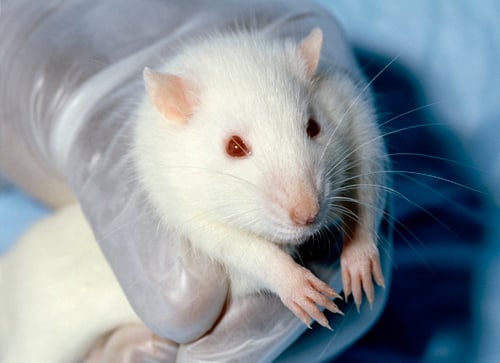Neuralstem has released a new report detailing positive results for stem cell treatments. Initial findings show that not only do implanted human spinal cord-derived stem cells survive, but also differentiate into neurons in rats brains affected by strokes. This finding could potentially provide new therapies for treating strokes.
Neuralstem stem cells survive and differentiate into neurons in rats with stroke
Neuralstem, Inc. announced that its spinal cord stem cells survived in rat brains affected by stroke and differentiated predominantly into neurons. The transplanted animals showed significant improvement in some motor skill and strength measurements. The study entitled, “Intracerebral Implantation of Adherent Human Neural Stem Cells To Reverse Motor Deficits in Chronic Stroke Rats,” was presented earlier today by senior study author, Dr. Shinn-Zong Lin, M.D., Ph.D., at the Stem Cells USA & Regenerative Medicine Conference, in Philadelphia, PA. Dr. Lin is a Professor of Neurosurgery and Vice Superintendent at China Medical University Hospital of Taiwan.
“This animal study shows the potential promise of this cell line in treating post-stroke symptoms,” Dr. Lin commented. “Four weeks after transplantation, the rats treated with Neuralstem’s cells showed significantly decreased asymmetric body swing, increased vertical movements and increased grip strength, compared with the control group.”
“Dr. Lin’s findings represent a significant milestone for Neuralstem. They are the first to show how our human spinal cord-derived stem cell product, NSI-566RSC, currently in a clinical trial for ALS, and which we expect to be in another clinical trial for spinal cord injury, also works in the stroke brain,” said Dr. Karl Johe, Ph.D., Neuralstem’s Chief Scientific Officer and Chairman of the Board of Directors. “Our proposed treatment for paralysis due to stroke will involve transplantation near the motor tracts close to the stroke lesion in the brain in order to promote regeneration and repair. While the trial protocol for ALS and chronic spinal cord injury involves transplantation into the spinal cord, and that for stroke will involve transplantation into the brain, we are nevertheless targeting the circuitry that controls motor function in each indication. We are developing clinical programs for stroke in both the U.S. and Taiwan, and hope to start our first trial in 2011.”
Contact: Deanne Eagle
Source: Neuralstem, Inc.









